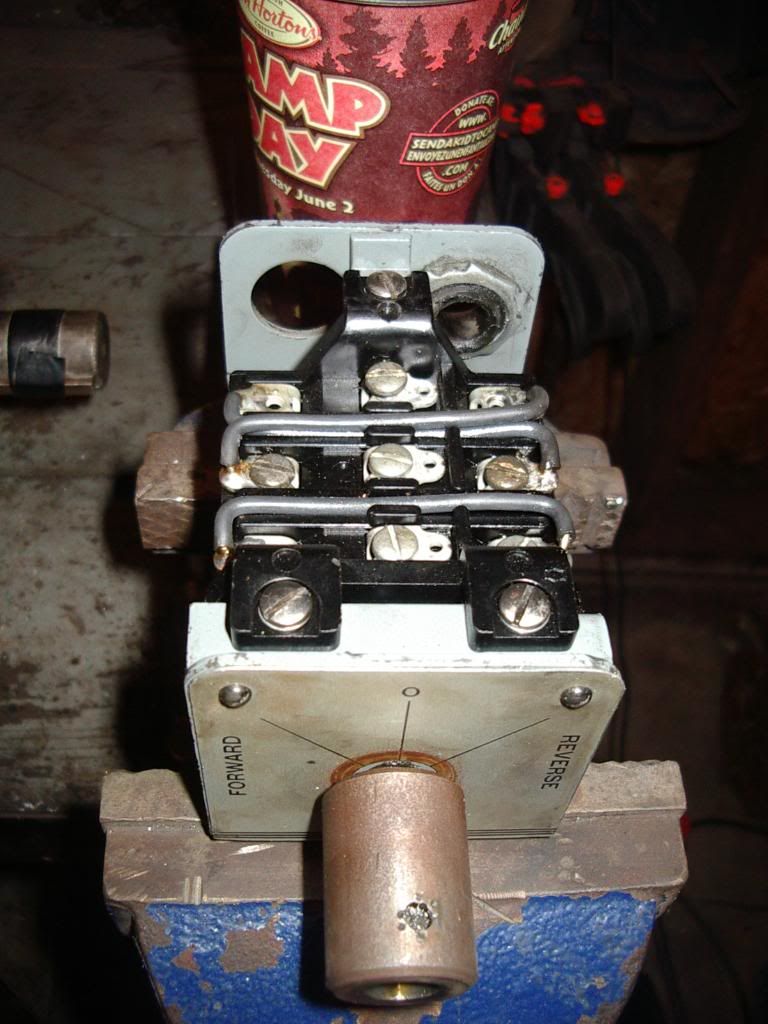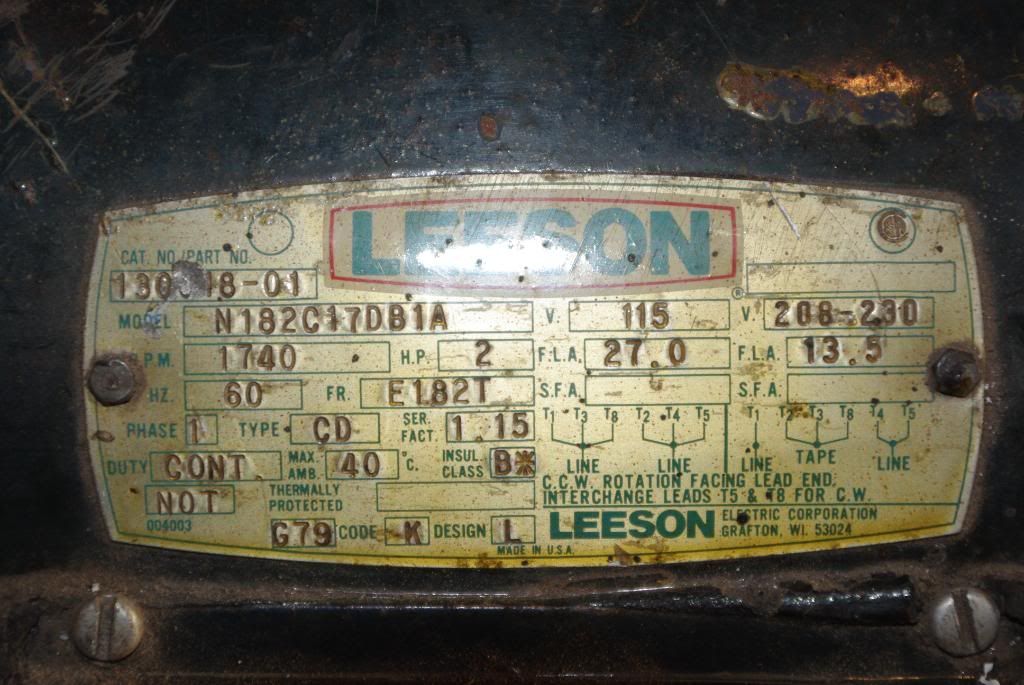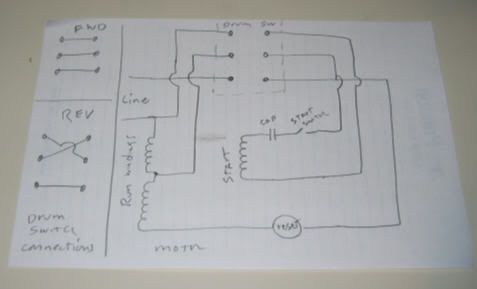Hey , I've been doing some searching around for a diagram to wire up a C-H drum switch to a 220 single phase Leeson motor with no luck . The motor is standard NEMA wiring I believe so I would think it would have been easy to find a diagram but so far no luck . I did find some topics on the forum here but the images have been removed or it just won't let me see them . While we are at it I've been told by a couple of folks that I shouldn't even bother with reversing and maybe they are right , I just thought if the switch was in the machine why not use it . One of these folks is an older gentleman that rewinds motors , which is where I got the single phase motor and a manual starter switch . We were looking at the cover for the drum switch and it had HP ratings for all the different voltages and phases and the switch is marginal for the HP but he said if I just used it as an off and on switch I would have spare contacts for when/if they burnt up . So the other day he called me back and asked me to stop by , he was converting and 3 phase magnetic starter to single phase for me and recommended maybe just using the drum switch to activate the magnetic switch to prolong the life of the drum switch . Now I am not a machinsit or an electrician by any means , and I ended up having more options than I could shake a stick at . Any thoughts , input , diagrams would be greatly appreciated .
Sorry the post is so long-winded , just trying to give some background to my situation , and I'm sure he would make me up a diagram but he is in the neighbourhood of 80 years and I don't want to be a pain in his side .
Here's the drum switch

and here is the motor , the two wires with the yellow tape are 5 and 8

Sorry the post is so long-winded , just trying to give some background to my situation , and I'm sure he would make me up a diagram but he is in the neighbourhood of 80 years and I don't want to be a pain in his side .
Here's the drum switch

and here is the motor , the two wires with the yellow tape are 5 and 8








